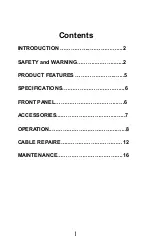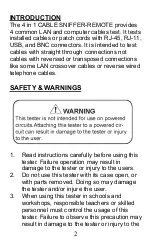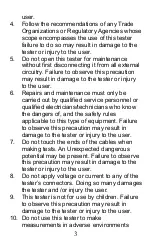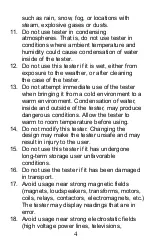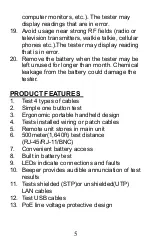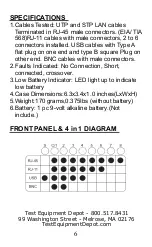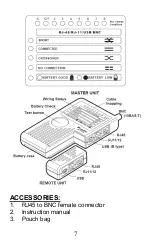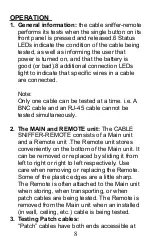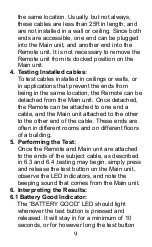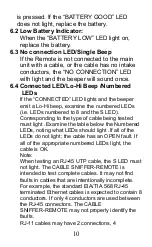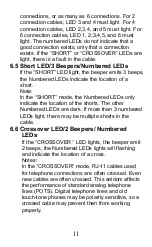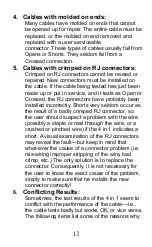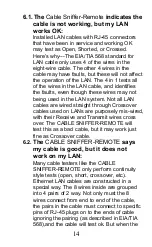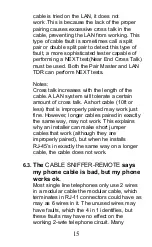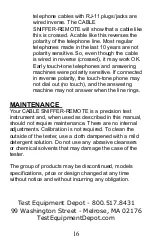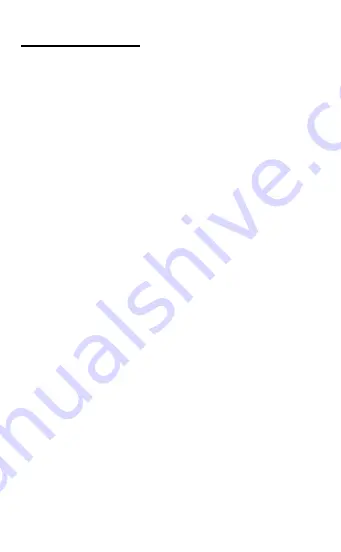
12
CABLE REPAIR
1.
General information:
The following section
provides information to the user about common
cable types, common failures and repairs. It is
not meant to be an exhaustive study of the topic,
just some basic information that the uninitiated
may find helpful.
2.
Cable damage:
When a cable tests badly,
either the wire of the connectors or both may be
at fault. If the cable has been installed and
working, then it’s likely that the wire or
connectors have been abused in some way. The
wire portion of the cable can be damaged by
being crushed (under the leg of a desk),
stretched (pulled sharply around a corner),
punctured (by a nail or staple), over loaded (hit
by lighting), etc. Similar abuses will damage the
connectors on the ends of the cable. The
connectors can also be damaged by excessive
insertion and removal or flexing of the cable
close to connector body. While the CABLE
SNIFFER-REMOTE can identify a bad cable, it
cannot determine if the wire or the connectors
are at fault. The user must examine the different
parts of the cable to determine the cause of
failure and take the appropriate steps to correct
the problem.
3. Which end is bad?
The CABLE SNIFFER-REMOTE like many cable
testers, cannot find the location of the fault, or
even determine which end or connector is bad. It
simply knows that a fault exists. The user must
locate the fault and take the appropriate action.


